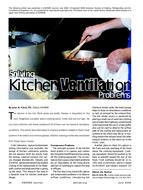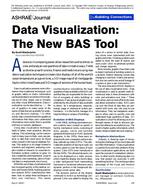A series of laboratory tests using a large-scale environmental chamber has been carried out on two flat roof models fully insulated with cellulose fiber. These two models represent typical flat roofs of urban houses, built in Montreal between 1930 and 1970. The insulating strategy consists of packing cellulose fiber to a density of approximately 4 lb/ft3 (67 kg/m3) in a single cavity roof between the roof planking and the ceiling plaster. The goal of the test program was to determine the performance of the assembly in terms of the risk of moisture accumulation in the roof assembly. The physical setup is a full-scale mock-up of the most common shallow flat roofs found in the Montreal area. The selection of the physical characteristics of the two test huts was based on the characteristics of 500 residential buildings. The two roof assemblies had different thicknesses, with one having 8 in. (200 mm) of insulation and the other 14 in. (350 mm). Each hut contained five roof cavities-one reference cavity without insulation and four insulated. One of the insulated cavities was sealed with polyurethane foam at all of its bypasses and was hence subjected to little or no air leakage, while the other three cavities were exposed to both diffusion and air exfiltration conditions. The testing protocol was developed to reproduce wetting conditions slightly higher than typically found in these houses. The humidity transfer was monitored using three methods: moisture content sensors in wood, relative humidity sensors in the insulation, and gravimetry for wood and cellulose specimens. The construction and the data collection are described in this paper. The difficulties in monitoring moisture transfer over long periods of time are also discussed. Major results of the six-and-a-half month test program using seven simulated climatic conditions are presented. Wetting and drying curves for roof cavities are presented, and exposure time to moisture is compiled and presented. The reliability of the test procedure is discussed. This paper shows that the developed procedure permitted the assessment of the net moisture accumulation and the moisture exposure level after one complete wetting/drying cycle with precisely known conditions.
AUTHOR: Paul Fazio, Ph.D., P.E., Dominique Derome, M.Eng, Dino Gerbasi, P.E., Andreas Athienitis, Ph.D., P.E., Sebastiano Depani, P.E.
CITATION: Thermal Performance of the Exterior Envelopes of Buildings VII
KEYWORDS: December, Florida, 1998
YEAR: 1998
Citation: Thermal Performance of the Exterior Envelopes of Buildings VII
Product Details
- Published:
- 1998
- File Size:
- 1 file , 580 KB
- Product Code(s):
- D-8119


